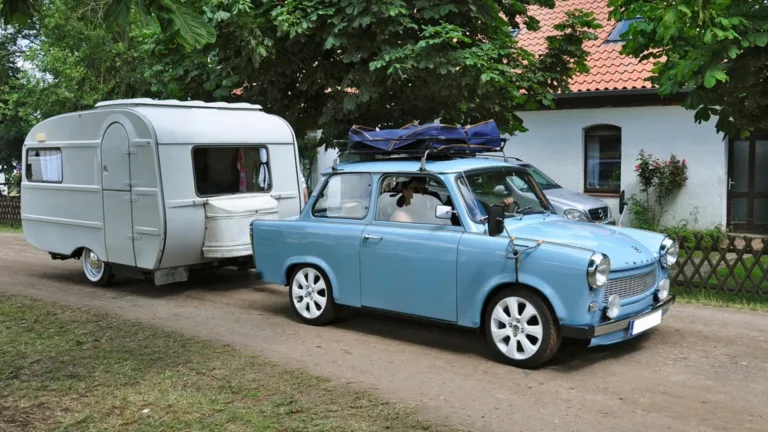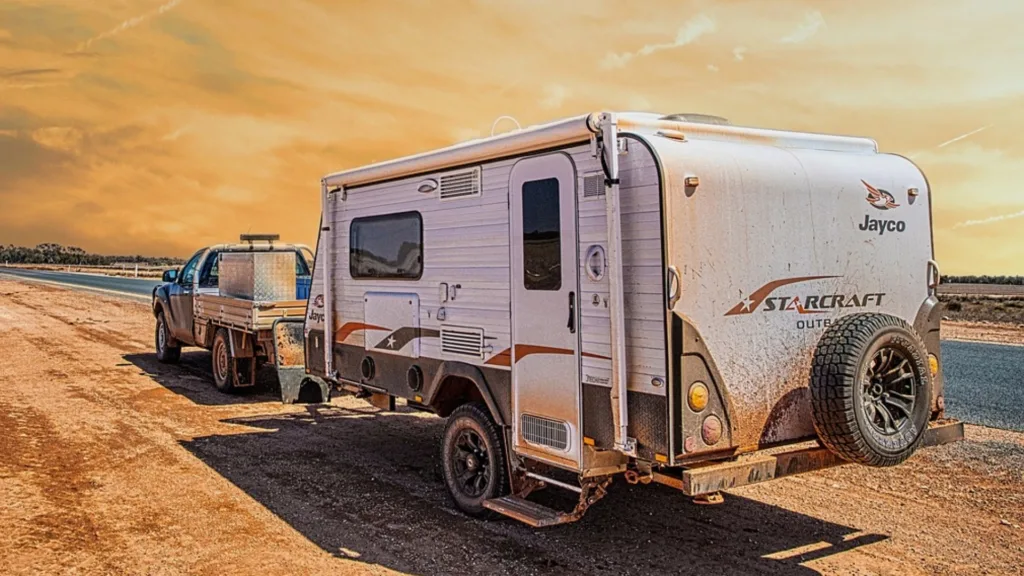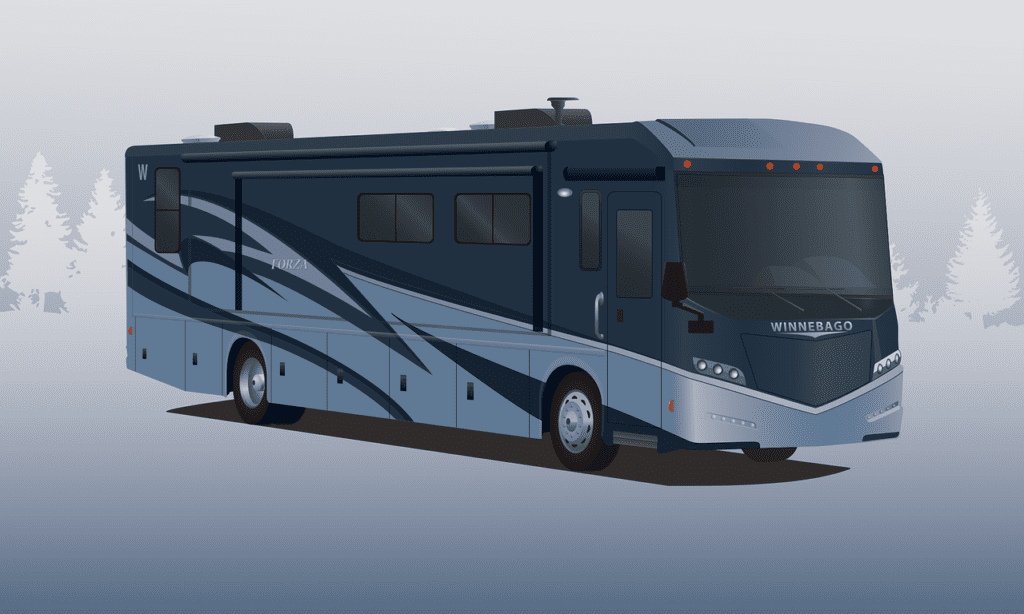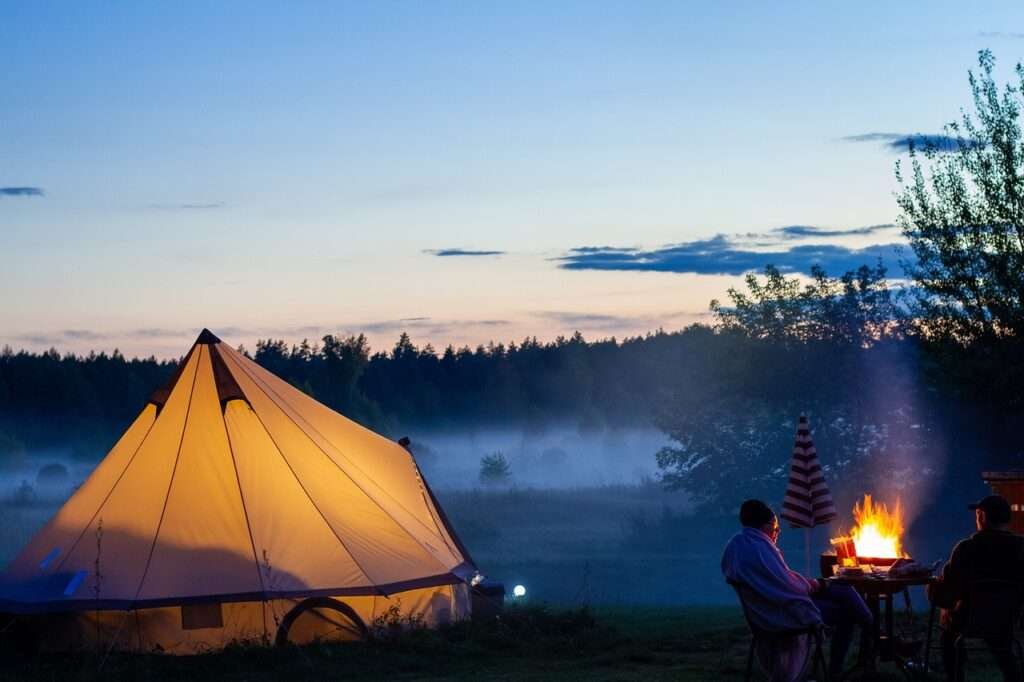Caravanning Holiday Safety Is Essential

Aside from adhering to both legal and condition specific sensible speed limits while towing, there are quite a lot of other conditions associated with towing a caravan on your holiday. Towing speed is a bit one though and it’s critically important to not tow a caravan over 100 km/hr, aside from being the law, towing a caravan at a speed greater than this can put you and other motorists in danger. So no, you cannot increase your speed to 110km/hr on the motorways.
Exceeding 100 km/hr whilst towing a caravan can cause instability and it will sway from side to side which can be dangerous and potentially lead to accidents with oncoming vehicles.
Your caravans safety chains must comply with Australian Standards must be of the correct load ranking. The next thing you need to do is to check for wear on the safety chains as the can sometimes drag on the ground.
What you will soon learn about towing a caravan is that the rules and regulations surrounding this activity were not plucked out of the air and then slapped onto a bit of paper. Just about ever safety condition you come across will link to multiple other safety conditions. To illustrate this point, in this article I’m going to start off talking about ‘using appropriate safety chains between your vehicle and caravan and let’s just see what type of rabbit warren that takes us down into.
How to avoid a caravanning holiday nightmare

It is mandatory to use Australian Standard and appropriated rated safety chains between your tow vehicle and the caravan because they prevent the caravan from completely detaching from your vehicle in the event of a coupling failure.
The last thing any of us want is to have a caravan detaching itself from the tow vehicle when travelling at 100 km/hr; it would be extremely dangerous and can cause accidents. To mitigate the risks associated with this, it’s essential that your caravan’s breakaway system applies itself immediately in the event of a detachment. It’s a legal requirement for any caravans with a gross mass (GTM) over 2 tonnes but I’m pretty sure that if I was looking at a caravan that weighed 1.9 tonnes, I’d want this safety feature. Most breakaway systems will turn on the brake lights of the caravan as well once it activates.
The main control unit of the breakaway system has its own battery is most likely located in a location that will minimise it becoming wet and should be fitted with a splash cover. These units should also be mounted in a way that enables plenty of air to circulate around them as they can get hot. They can be wired in to the aux power of the trailer to sustain their charge or they can be hooked up to a basic external battery charger on trickle charge, I’m not sure which is best but it does stand to reason that having it connect to your caravans own battery may be risky. The reason it could be risky is that if you are putting away your caravan after a journey and naturally pull out the pin but when detaching the trailer, unless you put that pin back in, the Breakaway system will activate and you’ll run down your caravan’s battery.
The Breakaway switch will usually be mounted to the top of the side of the a-frame that does not have the jockey wheel bracket at the front of the caravan to prevent it from getting knocked about. The switch contains a couple of spring-loaded contacts that are held apart by a removable pin. The removable pin is attached to a stainless steel cable and this cable is then independently connected to a shackle at the rear bottom of your vehicle.
If your caravan was to separate from your vehicle, the immediate pulling on the cable pulls out the removable pin from the switch. With no pin separating the spring loaded contacts, they immediately close which then completes the circuit (closes the circuit), and then power is immediately supplied to the braking system.
Once activated, the breakaway system will keep your caravans brakes applied for no less than 15 minutes. This gives you time to turn around and collect your caravan and either reconnect it or move it to safety.
As you would understand, if you were towing your caravan up or down a hill at the time of detachment, the likelihood of your caravan causing serious and potentially fatal harm to other drivers on the road is substantially increased.
Now naturally a caravan’s breakaway system is only as good as the caravans brakes, so the condition of your caravans breaks is just as important as having a breakaway system installed.
Become familiar with your breakaway unit, a good one should have a test button and battery charge condition lights (fully charged, needs to be recharged or that it is charging). Breakaway units are specific to the amount of axles your caravan has, the most common units are the ones designed for Single or Dual Axles.
All of this does make you think why we don’t just have the same coupling connections as often seen in Europe?
Ensuring the all important pairing of tow vehicle and caravan.

Investing
in the appropriate vehicle is crucial for towing a caravan as it helps ensure
the caravan’s stability and safety during the towing process. Accidents and
damage to the car and the caravan may result from the vehicle’s inability to
tow the caravan effectively and safely.
There are a few easy steps you should take to make sure your caravan and
tow car are matched properly.
Before you go too far with the dealer, make sure that the towing capacity of the vehicle is equal to or greater than the weight of the caravan. Also check that the weight of the caravan is evenly distributed across the axles to ensure stability. With a single axle caravan it’s not that simple to work out that the weight is even on both sides of the axle but not impossible.
Check that the tow ball weight is between 10% and 15% of the total weight of the caravan. This is the weight that the caravan puts on the tow ball when connected. It is essential to check that the braking system of the vehicle will be capable of stopping the combined weight of the vehicle and the caravan. If it is not you might want to move on to the next vehicle in the yard, otherwise there are upgrades available if you are happy to spend the money and as this is a legal requirement, don’t trust this task to anyone other than certified professionals.
Check that
the suspension of the vehicle you’re interested in is capable of handling the
weight of the caravan. As with the
stopping power of the vehicle, if the suspension is not as beefy as you need,
there are upgrade options available and there is a bit legality surrounding
this issue. Be sure to get the suspension
upgrade done by professionals only.
When
driving on the sometimes treacherous dirt roads of Australia’s outback, it’s
critical to have a suspension system that can withstand the punishment that
those roads will inflict on your vehicle, specifically your vehicle’s
suspension. There are several excellent suspension upgrade systems available
for caravans designed for rough roads or off-road adventures, including
trailing arm independent suspension and an airbag suspension system, both of which
are costly but fantastic.






